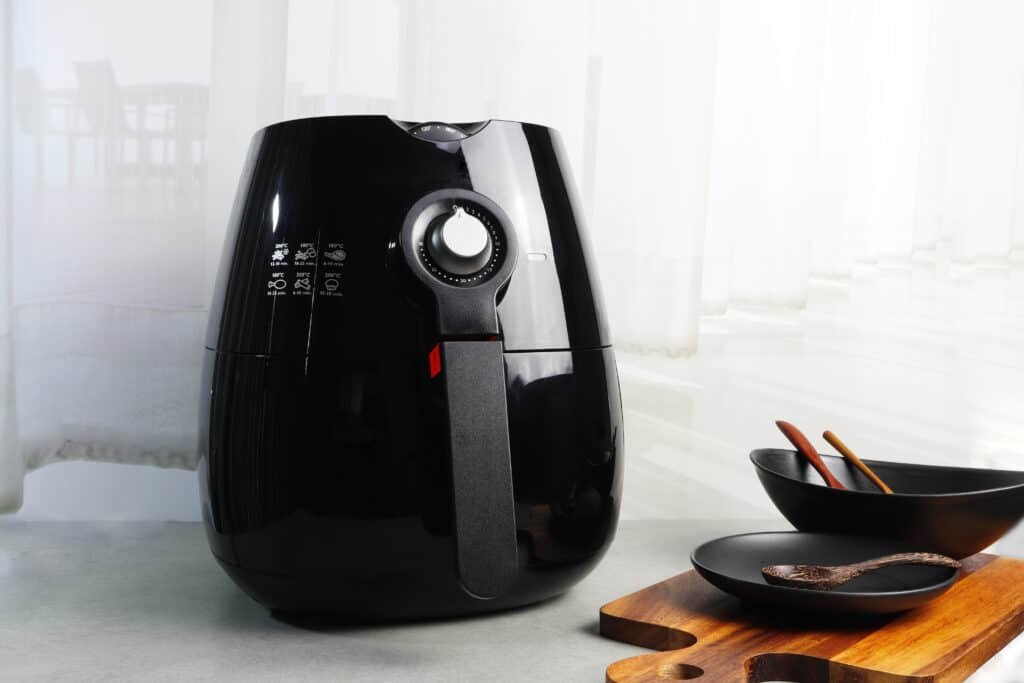I struggled to defrost fish balls quickly, but recently I’ve learned how to defrost fish balls quickly and safely. It is essential to defrost frozen fish balls quickly and safely to ensure they are safe to eat and preserve their quality and taste. If frozen fish balls are not appropriately defrosted, they may remain partially frozen in the center, leading to uneven cooking and potentially harmful bacteria growth.
If fish balls are defrosted too slowly, they can lose their texture and become mushy or develop off-flavors due to prolonged exposure to moisture. This can negatively impact the overall taste and quality of the dish. Therefore, it’s crucial to defrost frozen fish balls quickly using safe methods such as the microwave, cold water, or the fridge to ensure they are safe to eat and retain their texture and flavor.
If you’re looking for a way to defrost your fish balls quickly, this article is just what you need. Here, you will find everything you need to know about defrosting frozen fish balls quickly and efficiently.
How long does it take to defrost frozen fish balls?
The time it takes to defrost frozen fish balls can vary depending on the method used and the size of the fish balls.
Generally, defrosting fish balls in the refrigerator is the slowest method and can take several hours or overnight. Cold water defrosting usually takes around 30-60 minutes, depending on the quantity and size of the fish balls, and requires changing the water every 30 minutes.
Defrosting in the microwave is the fastest method and usually takes 5-10 minutes on the defrost setting. However, monitoring the process closely is essential to avoid overcooking or uneven heating.
Regardless of the method used, it’s necessary to ensure that the fish balls are thoroughly defrosted before cooking them to ensure they are safe to eat and cook evenly.
How to defrost frozen fish balls fast?
There are a few ways to defrost frozen fish balls quickly:
- Microwave: Place the frozen fish balls in a microwave-safe dish and defrost them using the defrost setting on your microwave. This method usually takes 5-10 minutes, depending on the quantity and size of the fish balls. Be sure to check on them frequently to avoid overcooking.
- Cold water: Place the frozen fish balls in a sealed plastic bag and submerge the bag in a bowl of cold water. Change the water every 30 minutes until the fish balls are fully defrosted. This method usually takes 30-60 minutes, depending on the quantity and size of the fish balls.
- Steam: If you have a steamer basket, steam the frozen fish balls for 10-15 minutes until thoroughly defrosted. This method also has the added benefit of cooking the fish balls slightly, which can save time during the cooking process.
It’s important to note that once fish balls are defrosted, they should be cooked immediately and not refrozen. Follow the cooking instructions on the packaging to ensure they are adequately cooked and safe to eat.

Can you defrost frozen fish balls in a microwave?
Yes, you can defrost frozen fish balls in a microwave. To defrost them in a microwave, follow these steps:
- Remove the frozen fish balls from their packaging and place them in a microwave-safe dish.
- Set the microwave to the defrost setting and select the appropriate time based on the quantity and size of the fish balls. Typically, it takes 5-10 minutes to defrost frozen fish balls using the microwave.
- Start the defrost cycle and check on the fish balls every minute or two. Be careful not to overcook them, leading to a tough and rubbery texture.
- Once the fish balls are defrosted, use them immediately. Do not refreeze them.
It’s important to note that microwaves can cook food unevenly, so checking the fish balls frequently is essential to ensure that they are defrosted evenly. Be sure to follow the cooking instructions on the packaging to ensure they are correctly cooked and safe to eat.
Should you defrost frozen fish balls in an oven? If so, at which temp?
No, it is not recommended to defrost frozen fish balls in an oven. The oven is not an appropriate method to defrost frozen food as it may cook the outer layer of the fish balls while the inside is still frozen, which can result in uneven cooking and loss of quality.
The recommended methods to defrost frozen fish balls are in the refrigerator, in cold water, or microwave. Once the fish balls are fully defrosted, they can be cooked using your preferred method.
If you plan to bake or roast the fish balls, it is recommended to follow the cooking instructions on the packaging to ensure that they are cooked at the appropriate temperature and time.

Can you put frozen fish balls into an air fryer?
Yes, you can cook frozen fish balls in an air fryer. However, it’s essential to defrost them using one of the recommended methods, such as in the refrigerator, cold water, or microwave. Once the fish balls are fully defrosted, follow these steps to cook them in an air fryer:
- Preheat the air fryer to 375°F (190°C) for 5 minutes.
- Spray the air fryer basket with cooking spray or lightly brush it with oil.
- Place the defrosted fish balls in the air fryer basket, leaving space between them for even cooking.
- Cook the fish balls in the air fryer for 10-12 minutes, shaking the basket halfway through cooking to ensure even browning.
- Once the fish balls are golden brown and crispy, remove them from the air fryer and serve immediately.
Note that the cooking time may vary depending on the size and quantity of the fish balls and the air fryer model. It’s essential to monitor the cooking process and adjust the time and temperature to ensure the fish balls are adequately cooked and safe to eat.

Should you defrost frozen fish balls in cold/warm water?
Yes, you can defrost frozen fish balls in the water. Cold water is recommended as it is a safe and effective method that helps to prevent bacterial growth. Here are the steps to defrost frozen fish balls in cold water:
- Remove the frozen fish balls from their packaging.
- Place them in a sealed plastic bag, removing as much air as possible.
- Fill a bowl or sink with cold water and submerge the bag of fish balls.
- Change the water every 30 minutes until the fish balls are fully defrosted. This helps ensure the water stays cold and the fish balls defrost evenly.
It’s important to note that this method may take up to an hour or more, depending on the size and quantity of the fish balls. Additionally, cook the fish balls immediately after fully defrosting to prevent bacterial growth.
Warm water is not recommended for defrosting frozen fish balls as it can promote bacterial growth and may partially cook the outer layer of the fish balls, resulting in uneven cooking and loss of quality.
Why shouldn’t you defrost frozen fish balls in warm water?
It is not recommended to defrost frozen fish balls in warm water as it can promote bacterial growth and potentially lead to foodborne illness. Warm water creates an environment that is conducive to bacterial growth, which can lead to the development of harmful bacteria that can cause food poisoning.
Moreover, defrosting frozen fish balls in warm water may partially cook the outer layer of the fish balls, resulting in uneven cooking and loss of quality. Partial cooking of the fish balls can also develop a rubbery texture or overcook in some areas.
Instead, it is recommended to defrost frozen fish balls using a safe and effective method such as in the refrigerator, in cold water, or using a microwave. These methods help defrost the fish balls evenly and prevent the growth of harmful bacteria, ensuring they are safe and healthy to consume.
Should you always thaw frozen fish balls before using them?
It is recommended to thaw frozen fish balls before using them as it helps to ensure that they cook evenly and prevent the growth of harmful bacteria. When frozen fish balls are cooked from a frozen state, the outer layer may cook too quickly, while the inside may remain frozen, resulting in uneven cooking and loss of quality.
Cooking frozen fish balls directly without thawing can increase the risk of foodborne illness as the center of the fish balls may not reach the safe internal temperature required to kill harmful bacteria.
Therefore, it is always best to thaw frozen fish balls before using them. The recommended methods for thawing frozen fish balls are in the refrigerator, in cold water, or microwave.
Thawing fish balls in the refrigerator is the safest method as it allows for slow and even thawing while thawing in cold water or using a microwave is quicker but requires closer monitoring to ensure that the fish balls are not partially cooked.

How do you get frozen fish balls crispy/crunchy?
To get frozen fish balls crispy and crunchy, you can follow these steps:
- Thaw the frozen fish balls: Take them out of the freezer and thaw them in the refrigerator overnight or at room temperature for about 30 minutes.
- Pat the fish balls dry: Use paper towels to pat the fish balls dry. This will help remove any excess moisture from the surface, preventing them from becoming crispy.
- Coat the fish balls with cornstarch or flour: Dust the fish balls with cornstarch or flour, shaking off any excess. This will help to create a crisp outer layer when frying.
- Fry the fish balls: Heat some oil in a frying pan or wok until hot. Carefully add the fish balls and fry until golden brown and crispy, occasionally stirring to ensure even browning.
- Drain excess oil: Once the fish balls are cooked, remove them from the oil with a slotted spoon and place them on a paper towel to drain any extra oil.
- Serve: Serve the fish balls immediately while they are still hot and crispy.
By following these steps, you should be able to achieve crispy and crunchy frozen fish balls.
How do you prepare frozen fish balls after unfreezing them?
To get your frozen fish balls ready to eat after unfreezing them, you can follow these simple steps:
- Thaw the frozen fish balls in a bowl of cold water for about 30 minutes or until they are completely thawed.
- Once thawed, you can either pan-fry, deep-fry or boil the fish balls to cook them.
- Pan-frying: Heat a tablespoon of oil in a non-stick pan over medium-high heat. Add the thawed fish balls and cook, occasionally stirring, until they are golden brown and crispy on all sides, about 5-7 minutes.
- Deep-frying: Heat oil in a deep fryer or a deep pot to 375°F. Add the thawed fish balls and fry until golden brown and crispy, about 3-4 minutes. Remove with a slotted spoon and drain on paper towels.
- Boiling: Bring a pot of water to a boil, add the thawed fish balls, and cook for 5-7 minutes or until they float to the surface.
- Once the fish balls are cooked, you can serve them hot with your favorite dipping sauce or incorporate them into a larger meal, such as soup or a stir-fry.
Enjoy your delicious and ready-to-eat fish balls!
How long do defrosted frozen fish balls last?
Defrosted frozen fish balls can last 2-3 days in the refrigerator if stored properly in an airtight container. However, consuming them within 24 hours is best to ensure their quality and freshness.
If you have defrosted the fish balls but do not plan to use them immediately, you can store them in the freezer again in an airtight container or freezer bag. This will help to preserve their quality and prevent the growth of bacteria. When ready to use them again, thaw them in the refrigerator or place them in a bowl of cold water.
It is important to note that fish, like any other perishable food, can spoil if not stored properly. To ensure the safety of your food, always handle and keep it according to food safety guidelines, and discard any fish that has an off smell, appearance, or texture.
Can you refreeze frozen fish balls once thawed?
Refreezing frozen fish balls after they have been thawed is generally not recommended. This is because when frozen food is thawed, the ice crystals that form during freezing begin to melt, creating moisture that can promote bacterial growth. Refreezing the fish balls can cause the growth of bacteria to continue and potentially lead to foodborne illness.
However, if the fish balls were thawed in the refrigerator, stored at a safe temperature (below 40°F or 4°C), and have not been left at room temperature for more than 2 hours, they can be safely refrozen. It is important to note that each time you thaw and refreeze the fish balls, their quality and texture may be affected, so it is best only to do so if necessary.
To maintain the quality of your fish balls, it is recommended to only thaw and cook the amount that you plan to use immediately. If you have leftover cooked fish balls, they can be stored in the refrigerator for up to 3 days in an airtight container, freezer bag, or freezer for up to 2 months.

